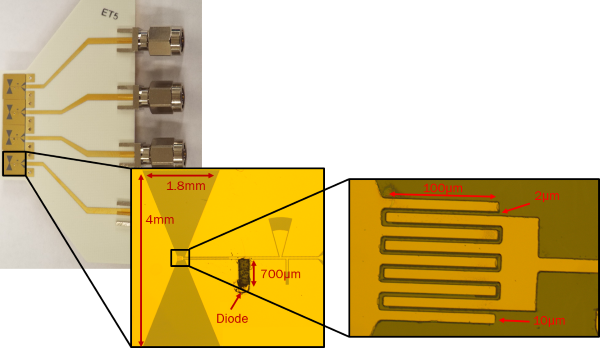
On April 21, 2020, Nicholas Estes submitted a Ph.D. thesis proposal entitle, "Investigations of Low-Power RF Front Ends For Use In Low-Resolution Receivers In Millimeter-wave Massive MIMO Systems" and passed the Candidacy proposal examination.
Abtract: Next-generation wireless communications systems are looking to exploit an abundance of spectrum at millimeterwave (mmW) frequencies as well as the benefits of spectral efficiency promised by massive MIMO systems. The current 5G solution employs traditional high-order modulation and phased-array beamsteering for mobile wireless, which at mmW consumes significant power per RF chain. Because of the high number of transceivers required to realize the benefits of massive MIMO, much research effort has gone into increasing the energy efficiency of the RF chains. One potential solution is the use of low-resolution, even 1-bit, architectures. This approach has been investigated by both information theorists and hardware designers. Circuit design strategies such as noncoherent detection and reduction in linearity requirements can reduce per-receiver power consumption. Yet the vast majority of 1-bit massive MIMO system analysis employs linear models which do not reflect the hardware realities of this low-resolution paradigm. This work aims to establish accurate receiver models for use in information-theoretic simulations that expose key hardware quantities and enable transceiver/system codesign in massive MIMO deployment scenarios. In this candidacy proposal, we describe a 1-bit on-off-keying (OOK) receive circuit at 39 GHz, for which a nonlinear noise model is developed and verified. This model is used to optimize the receiver design and predict massive MIMO system performance. BPSK and QPSK receive circuits at 39 GHz are also proposed based upon the 1-bit OOK unit cell.